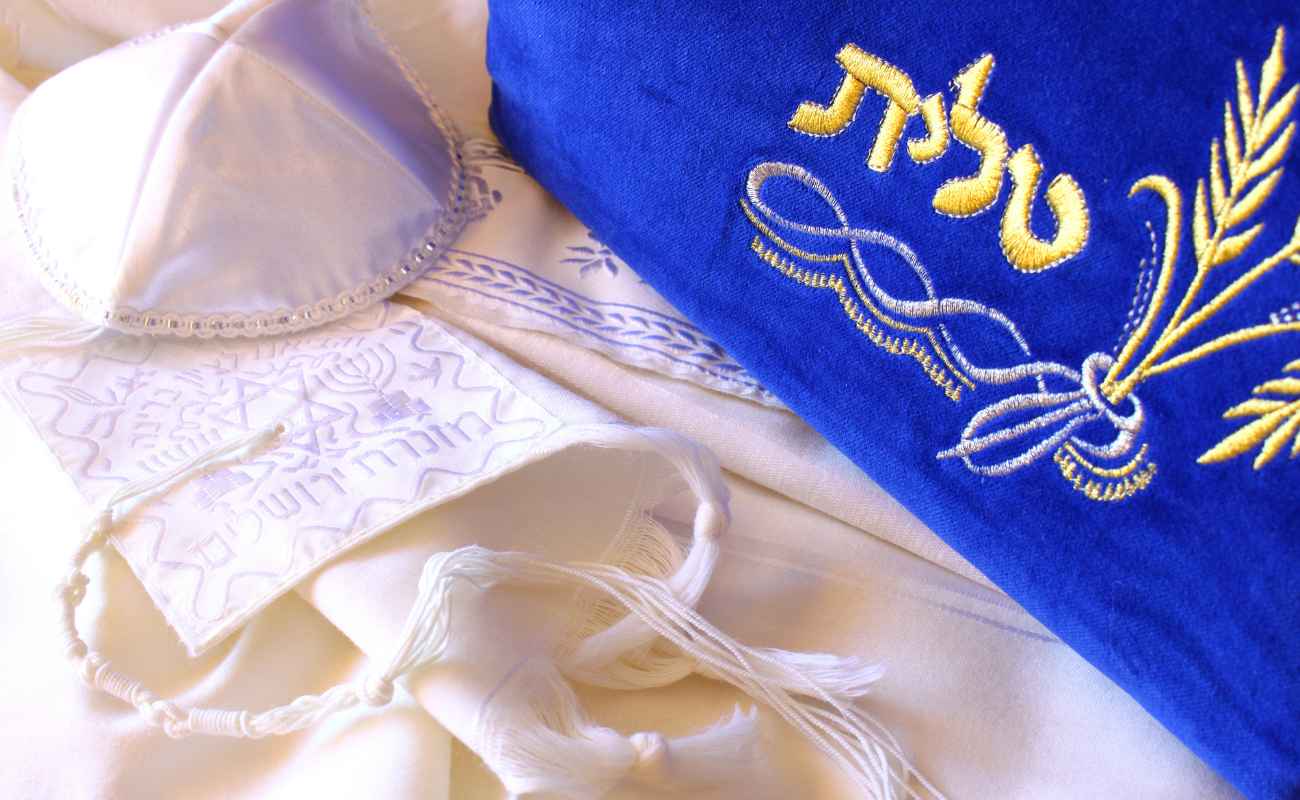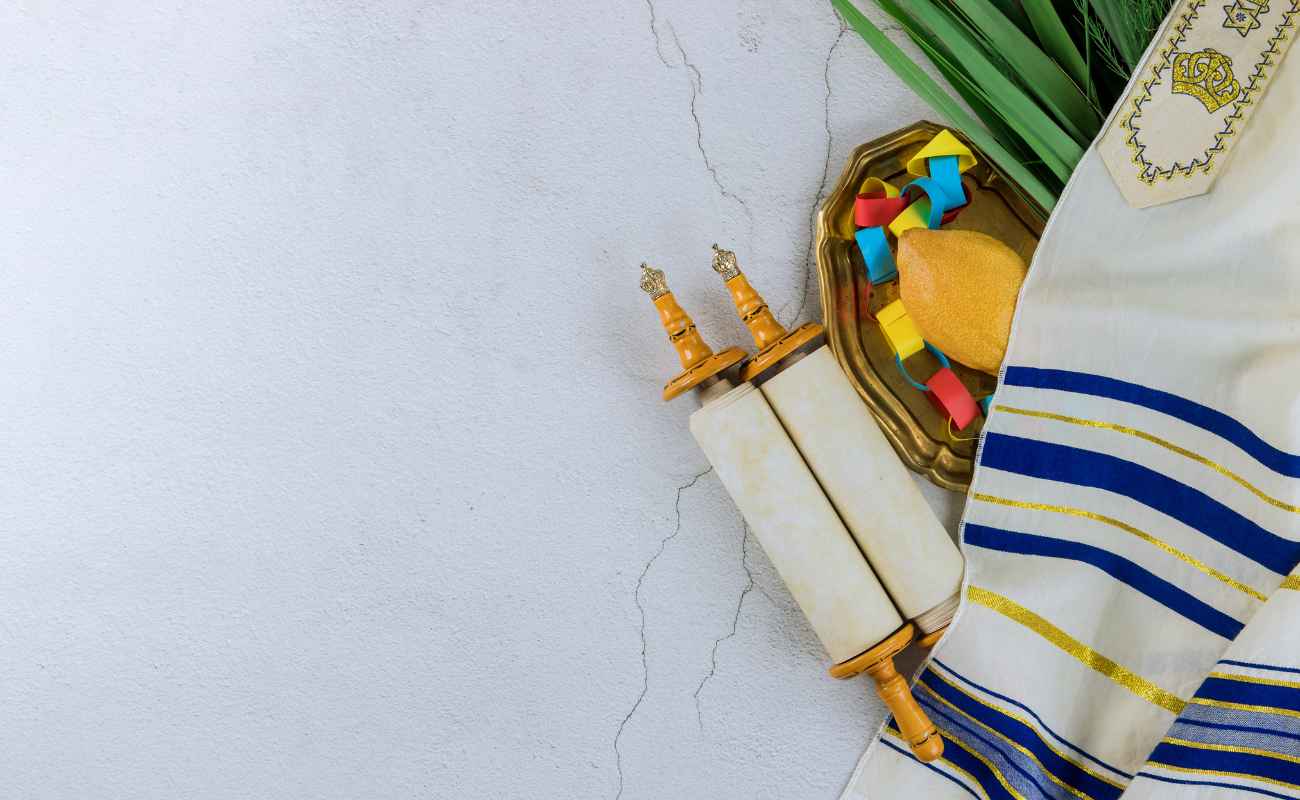Tallit is a prayer shawl worn around the body for prayerful practice, usually falling from the shoulders. Made of rectangular fabric with fringes or tzitzit at each corner.
Tzitzit are reminders of God's command to wear fringes on all four corners of clothing (Numbers 15:37-40). Tie them properly and they become an important symbol for Jews worldwide.
How do you pick a tallit?
Tallit is an ancient prayer shawl worn by those practicing Jewish religion. Made from various materials such as wool or silk, tallits typically feature white as their most prominent color.
Finding a tallit that perfectly complements your size is key when purchasing one, and one way of doing that is trying on various sizes and styles until you find what suits you best.
As a beginner, it may be wise to select a medium-sized tallit. This style should fit most average-size people but if you are taller or older you may require a larger tallit.
Make sure that the length of your tallit is not too long so that it does not drag on the floor while praying, and also ensure that its tzitzit (knotted strings tied onto corners of tallit) are long enough so they won't dangle low when tied tightly around your shoulders.
There are various ways to wear a tallit, but one of the most popular styles involves folding it in half and then draping it across your shoulders with its embroidered yoke over your neck. This style can often be found at Orthodox synagogues and other traditional Jewish communities; however, you may also see it at modern Jewish prayer services.
Fold your tallit up and hang it down the back of your body – an option popular among Orthodox and other synagogues worldwide; this requires purchasing a larger tallit.
In certain Jewish communities, it's a custom for men to wear both a small tallit katan (literally "small tallit") under their clothing as well as the regular tallit during prayer; this practice fulfills a biblical commandment to wear four-cornered garments known as tzitzit, fulfilling one commandment at once.
Choose from various modern and artistic tallit designs available online stores nationwide, but keep in mind that its size should depend on your own personal taste and local preferences.
When should a man wear a tallit?
A tallit, also referred to as a prayer shawl, is an integral component of Jewish tradition and worn during morning prayers by observant Jews to help connect to God and remember the commandments. Made out of fabric with fringes (tzitzit) attached to each corner as reminders for its four corners, its presence serves as an integral reminder.
Pious Jews typically wear tallits during daily life and public appearances. Some may wear an optional "small tallit" called a tallit katan that fits under their shirt with its own tzitzit and corner tabs for extra piety.
Orthodox Jewish tradition dictates that men wear talliths from bar or bat mitzvah age through to their wedding day – an elegant head covering which adds an elegant touch to any special event and becomes a treasured heirloom for years to come.
Tallit styles vary, with traditional and contemporary options offering various colors and patterns for both traditional and contemporary designs. If you want something truly personal and unique, custom-made tallits might also be available as options.
An excellent way to select the ideal tallit is by finding a designer or artist whose work inspires you and speaks directly to your experience. Additionally, consider supporting social enterprises that aid artisan weavers and their families.
Searching for the ideal tallit can be both enjoyable and thoughtful experience. Choose a piece that symbolizes your spiritual journey or one with design elements that bring back special memories from a special place or time in life.
When searching for a tallit, make sure it fits you properly and is constructed of superior materials. Your tallit should cover most of your body by at least one cubit in each direction and should measure at least 1 cubit from its center point to either end of its fabric width.
A quality tallit should be woven from wool, cotton or silk and constructed of sturdy fabric so it will stand the test of time.
Do you get married in a tallit?
A man's tallit is a traditional prayer shawl used during Jewish prayers. Traditionally worn draped over both shoulders like tefillin, then folded and tied around his neck into an atarah (yoke).
Tallits are typically constructed of wool, although cotton or silk weave may also be used. Most often worn during morning prayers but can be worn any time throughout prayer service.
Men's tallitot are sometimes embellished with intricate decorative designs that add a personal touch to their prayer shawls. Furthermore, they may feature blue or black stripes to reflect an individual's unique sense of style.
Jewish men traditionally don a tallit for prayer services on Shabbat and holidays as an expression of their faith; some wear one at weddings or other special events as an additional form of expression.
Height can play an important part in selecting a tallit, as can personal preference. Reform and Conservative Jews typically wear narrow tallits that droop down in front, while Orthodox Jews typically opt for larger types.
There are two primary styles of tallit: the "Tallit Gadol" (a large poncho-style garment) and "Tallit Katon," with one being worn around one's shoulders while the other covering just four corners of their body and tied securely in specific ways to all four corners of their garment.
Both styles of tallit incorporate the mitzvah of tzitzit, or fringes, into its design as an act of worship and an important reminder of Jewish law and tradition. Tzitzit must be created using special strings manufactured exclusively for this purpose with proper rabbinical approval.
At a Jewish wedding, tradition dictates that each couple exchange a tallit as part of their vows to one another and as an important sign of commitment within Jewish culture. It serves as an important symbol of their union as well as part of Jewish heritage.
Why do men wear tallit?
Men who practice Judaism wear a tallit (Aramaic: gadol, meaning "big") as part of morning prayer services and other important ceremonies, symbolizing their commitment to follow Torah (Torah law).
A man's tallit is typically constructed of wool, although silk or acrylic materials may also be used. It comes in both modern and traditional designs; with white with blue or black lines being the classic options but they come in any number of colors and patterns for your choosing.
Tallits are worn by Jewish males during synagogue services, particularly morning services and during special events such as bar/bat mitzvahs or weddings. It is customary for men to put on their tallit before donning tefillin (ritual objects worn on arm and head). Donning both together emphasizes its significance.
Men will wear an overgarment similar to a poncho and tie it around his corners with tzitzit, according to biblical law which commands them to do so (Numbers 15:37-40). This practice represents another act of reverence towards God and one's surroundings.
Jewish custom and tradition dictates that tallits be worn during major life events such as circumcision, bar/bat mitzvahs and weddings; also for Kol Nidre and Yom Kippur services in the evening service and burial services.
Tallits provide many reasons for men to wear one during prayer services; one primary benefit is creating an enclosed and intimate prayer experience. By wrapping yourself in your tallit, it helps focus on intentions and direction when praying.
Some individuals wear tallit for Simchat Torah readings on holidays or mourning someone they have lost; Yemenite Jews in particular follow an all-black tallit during periods of mourning.
When donning his tallit, male rabbis or cantors hold it by its atarah (collar section) and drape it like a cape over his shoulders. Depending on its size and material composition, they may fold it neatly .or flick its corners up onto his shoulders for easy donning
for more information click here:

